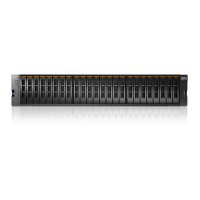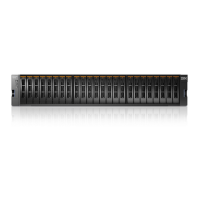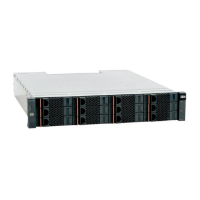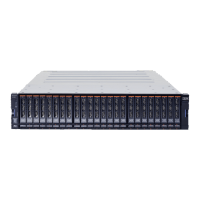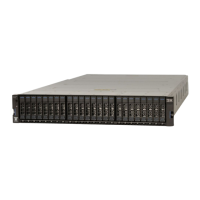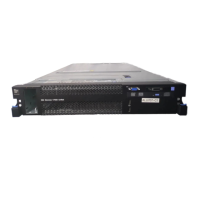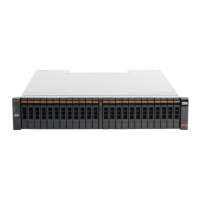Chapter 4. Storage pools 171
4.3 Working with managed disks
A storage pool is created as an empty container, with no storage assigned to it. Storage is
then added in the form of MDisks. An MDisk can be either an array from internal storage or an
LU from an external storage system. The same storage pool can include both internal and
external MDisks.
Arrays are created from internal storage using RAID technology to provide redundancy and
increased performance. The system supports two types of RAID: traditional RAID and
distributed RAID. Arrays are assigned to storage pools at creation time and cannot be moved
between storage pools. It is not possible to have an array that does not belong to any storage
pool.
External MDisks can have one of the following modes:
Unmanaged
External MDisks are discovered by the system as
unmanaged MDisks. An unmanaged
MDisk is not a member of any storage pool, is not associated with any volumes, and has
no metadata stored on it. The system does not write to an MDisk that is in unmanaged
mode, except when it attempts to change the mode of the MDisk to one of the other
modes.
Managed
When unmanaged MDisks are added to storage pools, they become managed. Managed
mode MDisks are always members of a storage pool and provide extents to the storage
pool. This mode is the most common and normal mode for an MDisk.
Image
Image mode provides a direct block-for-block translation from the MDisk to a volume. This
mode is provided to satisfy the following major usage scenarios:
– Virtualization of external LUs that contain data not written through the IBM Storwize
V5000 Gen2
– Exporting MDisks from the IBM Storwize V5000 Gen2 after volume migrations to
image mode MDisks.

